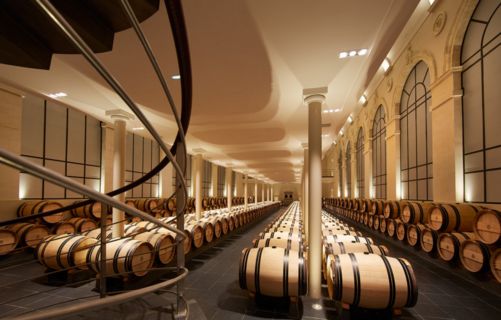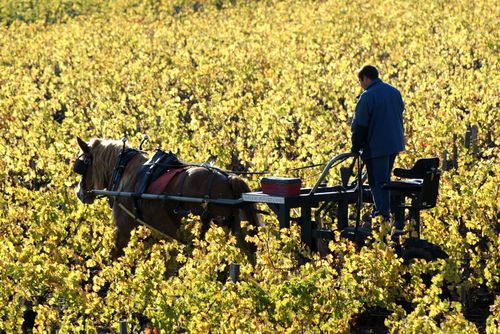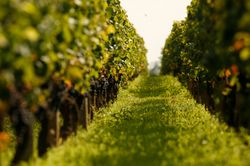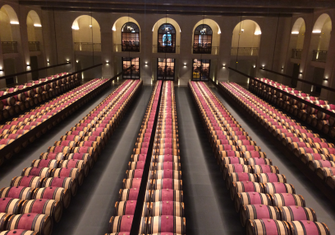Fine wine economics shapes steady growth and stability that delivers optimum returns over the long term. What does this mean for investors now?
As we sit at the tail-end of a 20-month correction in the fine wine market, it’s worth being reminded of the fundamentals of fine wine as an alternative asset:
- Limited supply: a finite amount of investment wine is created each year
- Quality improves over time: fine wine becomes more desirable with age
- Long-term potential: wine drinking windows can be at 20 to 50 years old
- Scarcity: fine wine becomes rarer as it’s consumed over time
- Tangible asset: unlike shares, fine wine has inherent, physical value
- Performance uncorrelated to financial markets: important for diversification
These factors all support stable price growth over time.

How does fine wine perform over longer periods?
Say, you wanted to put aside some money for a new grandchild, or child, in an investment that was low risk and tax-efficient, that might help pay for a house deposit or university fees in 20 years. Fine wine should certainly be a consideration, especially as any profits made are exempt from Capital Gains Tax.
The fine wine benchmark, the Liv-ex 1000, recorded growth of 290.6% over the 20 years to 31st May 2024, compared to the FTSE 100’s 86.8% rise. Individual wines also achieve much greater returns than the general trend.
We looked at the 2004 vintage to see how the wines have performed to June 2024 and it is evident that fine wine delivers value over longer periods despite negative cycles therein. You can see a few examples from each key region in the table below.
How have 2004 wines performed over 20 years?
| 2004 Wine | 20-year growth | First trade price | First trade date | Liv-ex price 16.06.24 |
|---|---|---|---|---|
| Burgundy | ||||
| Domaine de la Romanée Conti, St Vivant | 1,104.38% | £2,740 | 30.04.2007 | £33,000 |
| Domaine de la Romanée Conti, Romanée Conti | 600% | £30,000 | 30.04.2007 | £210,000 |
| Domaine Leflaive Batard Montrachet | 477.15% | £1,545 | 31.12.2005 | £7,372 |
| Bordeaux | ||||
| Chateau Lafite Rothschild | 527.91% | £900 | 10.06.2005 | £4,540 |
| Angelus | 462.5% | £480 | 30.06.2005 | £2,700 |
| Mouton Rothschild | 437.18% | £780 | 30.06.2005 | £4,300 |
| Champagne | ||||
| Krug, Clos de Mesnil | 1,509.29% | £700 | 31.03.2013 | £11,265 |
| Salon le Mesnil | 231.03% | £2,900 | 31.05.2016 | £9,600 |
| Italy | ||||
| Tignanello | 581.82% | £440 | 30.04.2007 | £3,000 |
| Sassicaia | 391.8% | £732 | 30.11.2006 | £3,600 |
| Masseto | 278.19% | £2,600 | 31.12.2007 | £9,833 |
| USA | ||||
| Dominus | 390.38% | £520 | 29.02.2008 | £2,550 |
| Opus One | 171.36% | £1,320 | 30.06.2006 | £3,582 |
| Screaming Eagle | 156.36% | £11,604 | 31.12.2007 | £29,748 |
Source: Liv-ex.com 16.06.2024, Liv-ex Mid-Price (12 x 75cl)
Some regions also deliver stronger returns over the long term than the general trend (as illustrated by the Liv-ex 1000 in the table below). Supply is a key factor, for example, the top Burgundy investment wines are produced in very low quantities. This, combined with the superb quality and market demand supports strong price performance.

Long-term regional growth trends in fine wine
| Index | 20-year performance | 10-year performance |
|---|---|---|
| Liv-ex Burgundy 150 | 578.2% | 143% |
| Liv-ex Champagne 50 | 436.1% | 107% |
| Liv-ex Italy 100 | 271.8% | 69.8% |
| Liv-ex California 60 | 240.6% | 86.8% |
| Liv-ex Bordeaux 500 | 221.1% | 33.2% |
| Liv-ex 1000 | 290.6% | 59.9% |
| FTSE 100 | 86.8% | 20.9% |
Source: Liv-ex.com data 31.05.2024
Wine investment market characteristics
Fine wine prices are generally stable and slow-moving, lacking the volatility found in equity markets where changes, up and down, can happen very quickly. As a result, whichever direction the market is moving in, the adjustment tends to be slow.
The most recent bull run commenced in response to the Covid pandemic in May 2020. Rising demand for tangible fine wine, during a period of growing inflation, drove an 18-month consecutive growth run to peak in October 2022. The Liv-ex 100 benchmark rose 42.5% and the broader Liv-ex 1000 lifted 41.8% in that period. Some investment wines recorded double-and-triple-digit growth at the top of the market.
Since October 2022, global inflation has gradually fallen, and the fine wine market has cooled. Prices drifted over the following 20 months to June 2024 to now stand at pre-pandemic levels for most regions. Rhone has seen the hardest correction in prices.
 What does this teach us? All markets have cycles, and we can expect prices to rise and fall. The key is when to sell and when to buy. Ideally, you take profit on the upside and buy at market lows. If the timing isn’t right for you to sell in a rising market, the option to hold for the longer term would deliver the best returns. This means accepting that, as with all assets, there will be periods of decline.
What does this teach us? All markets have cycles, and we can expect prices to rise and fall. The key is when to sell and when to buy. Ideally, you take profit on the upside and buy at market lows. If the timing isn’t right for you to sell in a rising market, the option to hold for the longer term would deliver the best returns. This means accepting that, as with all assets, there will be periods of decline.
With wine, you generally have time to determine the direction of travel. Over the two years to 31st May 2024, small incremental monthly adjustments of 1% or less have seen the Liv-ex 100 benchmark fall -14.6%. As an investor holding wine the current dynamic may be disappointing, but the fundamentals of fine wine’s finite and reducing supply over time, combined with improving quality with age, ensures the potential for price growth in the future.
The downward price adjustment also presents opportunity, offering the ability to buy at a significant market low right now. The trajectory of decline has softened in the last few months with pockets of growth in certain regions and wine labels suggesting the possibility of a change in trend in the coming months
For advice on how to add value to an existing fine wine portfolio in the current market, or if you are a new investor looking for information on starting a fine wine portfolio, speak to a member of our expert team on 0203 384 2262. See our latest Market Report for further details.

